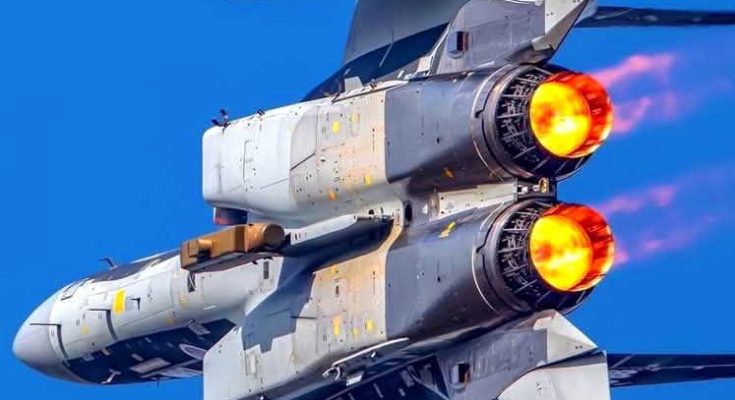The 2025 Boeing F-15EX Eagle II is a formidable fighter jet that marks the latest advancement in the long and storied F-15 lineage, offering the U.S. Air Force and allied nations a cutting-edge platform for air superiority. Building on over four decades of success with its predecessors, the Eagle II represents a leap forward in terms of technology, capability, and versatility, and has quickly earned a reputation as a fighter jet that “can’t be stopped.”
Evolution and Purpose
The F-15EX Eagle II is a modernized variant of the iconic F-15 series, designed to complement and eventually replace aging aircraft in the U.S. Air Force’s fleet. While the original F-15 Eagle has been in service since the 1970s, the F-15EX offers a next-generation solution, capable of performing a range of missions, including air dominance, strike, and multi-role operations. The Eagle II is designed to counter contemporary threats while ensuring combat effectiveness in the coming decades.
One of the main drivers behind the F-15EX is the need to update the Air Force’s aging fleet of fighters, particularly the F-15C/D models, which have been in service for over 40 years. The F-15EX is a direct answer to this need, delivering a platform that combines the best aspects of legacy F-15 performance with the most modern avionics, weaponry, and sensor systems available.
Performance and Capabilities
The F-15EX Eagle II is equipped with advanced avionics and high-performance systems that make it one of the most capable fighter jets in the world. Some of the key features that make this aircraft so formidable include:
- Powerful Engines: The F-15EX is powered by the F110-GE-129 engines from General Electric, which provide a substantial thrust-to-weight ratio, allowing the aircraft to reach speeds of up to Mach 2.5. These engines give the Eagle II exceptional acceleration, making it incredibly agile in combat situations.
- Advanced Avionics: The Eagle II boasts a new digital fly-by-wire system, which enhances its maneuverability and stability. The upgraded cockpit features the latest avionics, including an advanced radar system (AN/APG-82), a fully integrated sensor suite, and enhanced electronic warfare capabilities. The addition of Active Electronically Scanned Array (AESA) radar provides superior situational awareness, making it harder for adversaries to escape detection.
- Weapon Payload: The F-15EX can carry a wide array of munitions, including air-to-air, air-to-ground, and precision-guided bombs. With an impressive weapons capacity—up to 29,000 pounds of ordnance—this aircraft is capable of engaging targets with unprecedented flexibility and firepower. The addition of smart weapons and the ability to fire advanced hypersonic missiles further elevates its strike capabilities.
- Autonomous Capabilities: The F-15EX integrates artificial intelligence (AI) to enhance its operational efficiency. AI-powered systems can help with mission planning, target identification, and even autonomous combat in certain scenarios, making it a true “pilot’s wingman.” These technologies contribute to the F-15EX’s survivability in complex and contested environments.
Strategic Importance
The F-15EX Eagle II isn’t just a powerful fighter; it is a game-changer in terms of the Air Force’s overall strategy. Its interoperability with other platforms and its ability to carry out a wide variety of missions make it a versatile asset for both air-to-air and air-to-ground operations. Additionally, the F-15EX’s upgraded systems and longevity (with a planned service life of up to 20,000 flight hours) ensure that it will remain a critical component of the U.S. Air Force for decades.
Another key benefit is its ability to serve in tandem with fifth-generation aircraft like the F-22 Raptor and F-35 Lightning II. The Eagle II can operate alongside these stealthier jets, providing complementary capabilities such as enhanced range, payload capacity, and versatility, while the fifth-generation aircraft provide stealth and sensor superiority.
Conclusion
The 2025 Boeing F-15EX Eagle II represents the cutting edge of fighter jet technology and will undoubtedly remain one of the most potent tools in the U.S. Air Force’s arsenal. With its combination of raw power, advanced avionics, and versatility in combat, the Eagle II is poised to dominate the skies and ensure air superiority for years to come. Whether in air-to-air combat or conducting precision strikes, the F-15EX is indeed a fighter jet that is hard to stop.



